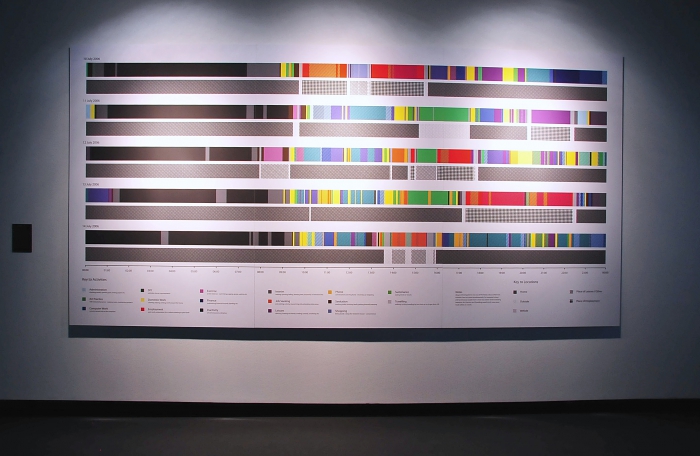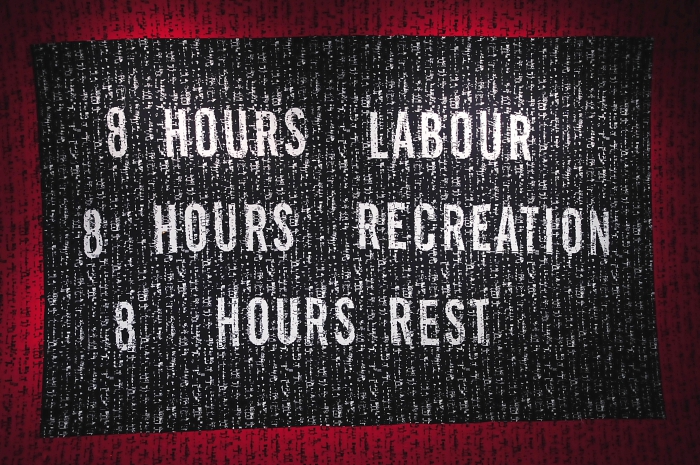During our tutorial, JL noted that “time poverty is not only a problem for East Asian women but also a structural, globalised issue, shaped by class and culture.”
This insight made me realise that while my current exhibition—structured around “cognition–reflection–action”—emphasizes experiential processes, it still lacks a clearly defined sociological dimension in its narrative.
My tutor’s proposed three-tiered framework—from universal time poverty to the global time dilemmas of women and finally to the cultural specificity of East Asian women—offers a clear theoretical structure for developing the exhibition.
However, I am also aware that if not handled carefully, this broad-to-narrow structure may dilute or even contradict my original curatorial intention, which is to foreground women’s time poverty within an East Asian context.
Case Study: Time & Motion
This week, I researched FACT’s exhibition Time & Motion: Redefining Working Life, and several works within it offered compelling insights that can be translated into curatorial strategies.

Timelines by Ellie Harrison
For example, Ellie Harrison’s Timelines transforms the artist’s daily activities into a colour-coded bar graph—a work that functions not only as a visualisation of self-quantification but also as a satirical critique of the illusion of “self-management.”

Punchcard Economy” by Sam Meech
Sam Meech’s Punchcard Economy converts labor data into knitting patterns, materializing time in a tactile and embodied way. This approach has informed my concept of the “Time Bill Fabric Wall”, where time expenditure becomes a touchable and collective textile record.
Together, these works underscore a central theme:
Time is not a neutral background, but a social mechanism deeply structured by institutional, technological, and systemic forces.
Adjustment of the Curatorial Framework
To respond to previous reflections, I plan to introduce a dual-track narrative structure:
-
The first thread (Part 1: “Recognition”) begins with the theme of global time oppression, guiding the audience to establish resonance through everyday experience.
-
The second thread (Part 2 & 3: “Reflection” and “Action”) gradually shifts focus to East Asian women, uncovering specific structural issues through real-life cases, cultural contexts, and community-based collaboration.
Resources
Time & Motion:https://www.fact.co.uk/event/time-motion-redefining-working-life
Timelines” by Ellie Harrison exhibited at “Time and Motion: Redefining Working Life”
Photo: Paco Neumann / transmediale, 2015. CC BY-SA 4.0
Punchcard Economy” by Sam Meech exhibited at “Time and Motion: Redefining Working Life”
Photo: Paco Neumann / transmediale, 2015. CC BY-SA 4.0


Leave a Reply